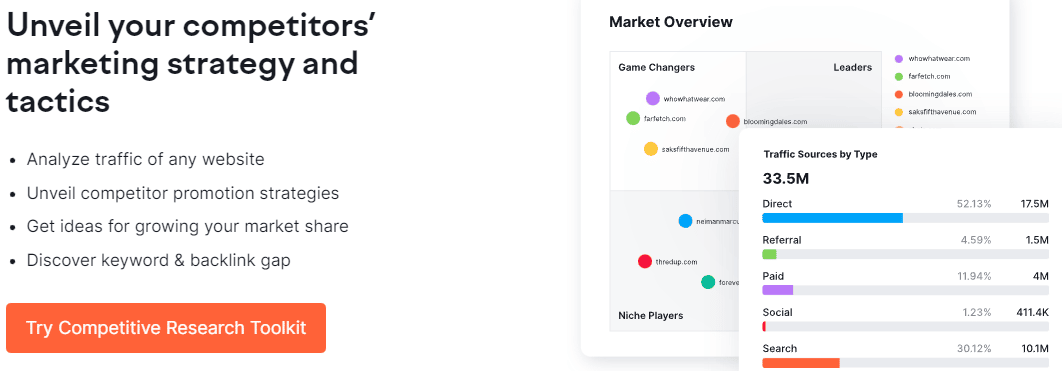Google's Search Algorithm, the Hummingbird update
As we head into 2023, let's go back ten years to Google's hummingbird update, first announced in September 2013. In just a few words, this algorithm update was named after the speed and accuracy of the Hummingbird; this was to understand the user's intent better when they search and deliver more accurate results.
However, many marketers and SEOs are still figuring out how this impacts their daily work. This article will look at Hummingbird, how it affects your marketing strategy and long tail keywords.
Google Search after the Hummingbird algorithm update
The Google Hummingbird algorithm update marked a significant turning point for search engine optimization. Google's search algorithm has been quietly humming along since its release in 2013.

This update serves as a potent reminder of the focus on semantic search. Content that is natural, engaging, and relevant to the user query will be seen as more valuable in the eyes of Google Hummingbird. Creating content that meets the SEO standards established by Google is essential if your website is to rank well in this updated version of its algorithm.
* You can download the Google Hummingbird Algorithm PDF here.
The core of the Hummingbird algorithm update is to focus on conversational language and user intent when serving results. This means that Google will look for content that better understands what the user is searching for rather than just focusing on keywords.
While keyword research and optimization may still play a role in SEO performance, it will no longer be the sole factor in how well a page ranks. Digital content marketing is more critical and involved than ever before, making internet marketing slightly more complicated yet more profitable for those who take advantage of Google's algorithm updates.
Hummingbird has also changed the way that people interact with search engine results. As a result, Google can now understand the intent behind queries and provide more relevant information than before.
Nowadays internet marketing needs to focus more on mobile search, web site quality and conversational search.
For example, if you were to search for “what is the best smartphone,” instead of being presented with a list of possible results, you may get the top 3 smartphones based on user reviews. This is just one example of how the Hummingbird algo has changed how users interact with search results.
Finally, Hummingbird has allowed Google to understand better natural language queries and complex topics such as facts and figures. So, for example, if you were to ask, “how many people live in Canada,” you would be provided with the correct answer rather than a list of websites that might have the answer.
This makes it easier and faster for users to get the necessary information without additional research.
Overall, Google Hummingbird has made search engine optimization more complex but also more effective. Marketers and SEOs must create natural, relevant, and engaging content to remain competitive in the SERPs.
The Goal of the Hummingbird Update
Hummingbird aims to provide users with better results tailored to their needs, so marketers must create high-quality content that meets these standards. As long as you remain focused on creating relevant and optimized content for semantic search, you can expect your website to perform better in the SERPs.
The Google Hummingbird algorithm update has altered how people interact with search engine results. It has also changed how marketers and SEOs optimize their content, shifting the focus from keyword optimization to understanding user intent. As a result, content must be natural, relevant, and engaging in ranking well in the SERPs.
With its emphasis on semantic search, Hummingbird has made SEO more complex but also more effective. This update serves as a reminder of how important it is to create high-quality content that meets users' needs.

By creating content that meets these standards, marketers can take advantage of this algorithm update and ensure their website performs well in the SERPs.
Google's algorithm has undergone significant changes in recent years, most notably with the introduction of the Hummingbird Update. This was a substantial overhaul of the search engine, increasing its ability to provide results more in tune with what users were looking for in their search queries.
By utilizing natural language processing and other technologies, Google was able to build upon existing search capabilities while giving it the flexibility to modify how it sorts through content.
The Hummingbird update firmly focused on providing tailored answers that responded directly to more complex topics and queries - something which has become increasingly popular with google search users today.
Google has also implemented other updates, such as RankBrain and Panda. These two different algorithms were created to improve the overall quality of search results by better analyzing user queries and sorting through content that was more relevant to their searches.
Google is constantly trying to stay ahead of the curve by adapting its algorithms and providing users with the best search results. However, as technologies and user expectations evolve, so will Google’s algorithms.
There will likely be many more updates made as Google strives to remain one of the most popular and powerful search engines on the internet.
Meanwhile, other search engines are also vying for supremacy in the search engine arena. It remains to be seen how they will compete with Google, but it is clear that updates and algorithm changes are becoming more prominent in the industry.
By continually improving its algorithms, Google provides users better results and a more streamlined experience when searching for content online.
Search Queries and NLP
Search queries are a powerful tool to leverage when looking for information online; however, search engines such as Google have revolutionized search even more with the introduction of knowledge graphs.
A knowledge graph is an ontology of knowledge that uses algorithms and AI to provide more accurate and insightful data than simply cross-referencing SERP results.

As search engines continue to employ this technology, the search experience will become more intuitive and targeted to users’ needs. It’s an exciting development in search that shows no signs of slowing down.
Additionally, search engines have become increasingly skilled at recognizing the natural language and conversational queries. This has allowed users to ask questions the same way they would a human being and receive meaningful responses from the search engine.
Natural language processing (NLP) technology is advancing rapidly, allowing search engines to understand complex queries better and provide more accurate results. From asking Siri to set a reminder to use Google Home to answer questions, NLP is becoming an integral part of the search experience.
The future of search looks bright and will likely involve further integration with AI technology. Search engines have already begun incorporating machine learning into their algorithms to anticipate user queries better and deliver more relevant results, and this trend is likely to continue.
As search engines become more sophisticated and intuitive, users will benefit from more accurate information delivered fast.
We've thoroughly implemented NLP into our content writing services.
A knowledge graph is a powerful tool that can be used to capture, store, and share knowledge across an organization or the world. It is an ontology of knowledge structures that uses algorithms and AI to provide search results and insights more accurately than traditional methods.
Knowledge graphs incorporate machine learning technology to index data from multiple sources and gain more information about the relationships between entities, allowing users to uncover hidden insights.
Knowledge graph technology advances will allow search engines to become more intuitive and targeted in providing information to users. This could result in more efficient and accurate searches, with better results than ever.
Soon, we may see search engines that can understand natural language and respond to conversational queries. Natural language processing technology is already improving rapidly, allowing search engines to understand complex queries better and return more accurate results.

Voice-activated assistants like Siri, Alexa, and Google Home are becoming increasingly popular, allowing users to ask questions as if they were talking to someone and receive meaningful responses from the search engine.
We may even see search engines with facial recognition capabilities in the future. This technology could bring us closer to talking to computers as if they were people.
The possibilities for search are endless, and it’s an exciting time for anyone interested in the future of search. Search engines will become more intuitive and targeted with sophisticated algorithms and AI-powered technology.
This could result in faster, more accurate information is delivered to users than ever before, an incredible advancement that can revolutionize how we truly find information. The future of search is here, and it promises a lot!
Related: Best Text-to-Speech Video Creator for YouTube
Search Engine Hummingbird Safety Guide
Google Hummingbird is an algorithm that focuses on semantic search, changing how Google analyzes search queries and orders search results. As a website owner, you want to make sure your Google ranking stays up-to-date with this ever-changing landscape, so here are a few tips to help optimize your website for Hummingbird:
Use natural language when writing content - Google rewards content that reads naturally, not ‘keyword’ heavy chunks of text. So focus on creating content that best answers the query in a conversational and easy-to-read manner.
Create authoritative content - Hummingbird is looking for high-quality, informative content that provides real value to the user. Ensure your content is backed up with data, research, or other credible sources to show Google you’re an authority in your field.
Optimize for mobile - Hummingbird is optimized to serve mobile users, so make sure your website is too. Mobile users should have the same great experience as desktop users, with no loading time delays or a lack of functionality.
Integrate semantic markup - Semantic markup tells search engines and other computer programs what your content is about and can help boost the visibility of your website in search engine results pages. For example, use schema markup to give Google an idea of the type of content you’re providing so it can rank it accordingly.
Optimize for local results - Hummingbird emphasizes local search results, so if you want to take advantage of this, ensure your website is optimized for local searches. Use accurate NAP (name-address-phone number) information, geographic keywords, and other content to help Google direct customers to your business.
Keep an eye on the competition - Stay one step ahead of the competition by monitoring what they’re doing online. Monitor their backlink profiles, content quality, and other SEO practices to stay ahead of the game.
Keeping your website up to date with Google Hummingbird isn’t as complex as it sounds - follows these few tips, and you’ll be well on your way to a more efficient and effective website that ranks better.
Also, create longer content so Google can better understand the context in which you’re using keywords.
By following these tips, you can ensure that your website remains optimized for Google Hummingbird and its new techniques for semantic search.
Finally, remember to check back often and keep your content fresh. Search engines are constantly evolving, so staying on top of the latest changes is key to ensuring you stay ahead in search engine rankings.
What is Semantic Search?
Semantic search is the next frontier in internet searching, aiming to make searches more accurate by understanding the intent and context of a search query. As opposed to traditional keyword-based search, semantic search interprets the meaning of a user’s query to determine search results.
This allows for voice search - a type of semantic that involves users issuing vocal commands into their device microphone rather than typing queries into a text bar. Voice search can provide users with more relevant and accurate results tailored to their needs and interests, significantly improving the overall user experience.
It also requires less time, effort, and precision in issuing each request. As a result, it has endless potential applications and is quickly becoming an integral part of modern digital technology.
Semantic search technologies are also applied to other AI-driven services, such as natural language processing, machine learning, and predictive analytics.
With the help of these advanced cognitive computing technologies, semantic search can be used for various purposes ranging from medical diagnostics to data analysis to customer service.
By leveraging this new search technology, organizations can better understand their customers, optimize their operations, and deliver personalized experiences.
As semantic search technology continues to evolve, organizations should strive to keep up with the latest developments to remain competitive.
Companies can also use this technology by creating custom natural language processing (NLP) models tailored to their specific business needs.
With semantic search and NLP, organizations can unlock the full potential of their data and gain powerful insights into their customers and operations. Ultimately, semantic search is set to revolutionize searching on the internet in the coming years, allowing users to find what they need faster and more accurately than ever before.
A Look at the Future of Search Engine Optimization
Search engine optimization is exciting right now, with innovations such as Google Hummingbird, a significant revision to Google’s algorithm, which has enabled voice search. This has made it easier for people to find what they are looking for quickly and efficiently, paving the way for the future of SEO.

As technology advances and evolves, so does SEO, providing marketers with more opportunities to get their message out there and drive traffic to their website or business.
With all the fantastic possibilities that have arisen from Google Hummingbird and other advancements in the industry, it is easy to be optimistic about what lies ahead for search engine optimization.
The Google Hummingbird algorithm update was a significant change to how Google works, and it has positively impacted search results and speed. If you want to ensure your website is optimized for Hummingbird, you can do a few things, including making sure your content is high-quality and keyword-rich.
Looking ahead, it’s essential to stay up-to-date on all the algorithm updates from Google and other search engines to ensure your website is constantly optimized for the best possible rankings.
The Google Hummingbird update profoundly revolutionized the way search queries are processed. This algorithm allows search engines to understand natural language better, enabling them to interpret complex search queries and provide more accurate responses.
The Hummingbird update has been a great boon for users and businesses as they can craft organic searches that get peerless results.
Despite its arrival speed, Google’s hummingbird update is here to stay, demonstrating the potential for computers to understand our everyday language, producing extraordinary outcomes.
Related:
- Backlinks SEO Strategy and its Importance
- Benefit of Content Marketing Strategy
- Advanced SEO Toolset for Higher Google Rankings
- Best SEO Optimizer for Your Content
- How to get your backlinks indexed on Google
- Best Keyword Research Tools for SEO
- Pictory AI Review
- Improve Your Keyword Rankings Fast
Related tags: google hummingbird algorithm pdf, google hummingbird update 2016, user search queries, humming bird update, technical seo, search hummingbird algorithm, search engine query, translate semantic search

